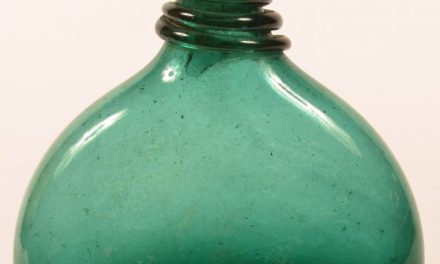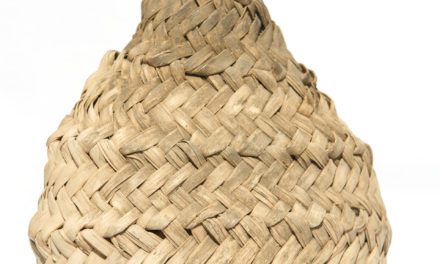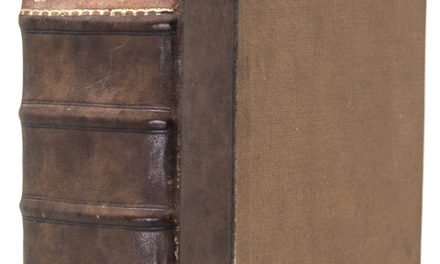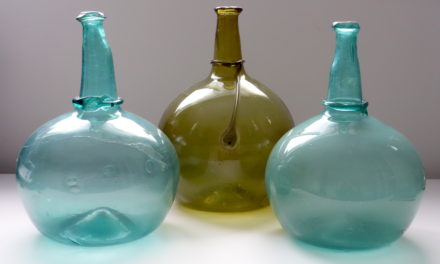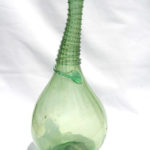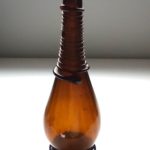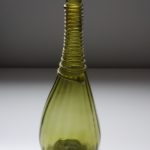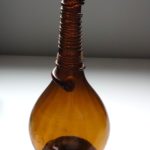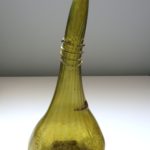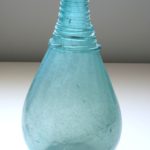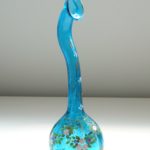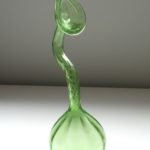Gulab pash, Gulab dani, Ashkdan, tear catcher…? So many names, one kind of bottle. This is a short note about one that just added itself to my shelves…
That sense of delight you feel when the piece of glass that shows up is about half the size that you were expecting it to be?
Yeah, that.
Having assembled a respectable collection of what I believe are Persian rosewater sprinklers, and having already one Ottoman Beykoz rosewater sprinkler on my shelf, I was quite looking forward to adding an Indian sprinkler so that I could start to learn how to tell them apart. Of course the Persians might be Indian, and the Indians might be Bohemian, or English, or…but I digress.
So a package arrived from India this morning. It was wrapped in stitched cloth – a first for me. That alone was exciting. I was awaiting the arrival of a gorgeous green Indian rosewater sprinkler, and this was it! I opened the box (no rattling, a good sign!), and there was bubble wrap and then another box. And then more bubble wrap. Then a styrofoam layer that would have done a sarcophagus proud. Then more bubbles. And more. And still more… How small was this thing anyhow?
And eventually, it finally revealed itself to me. It was delightful, and stunning, and…tiny!
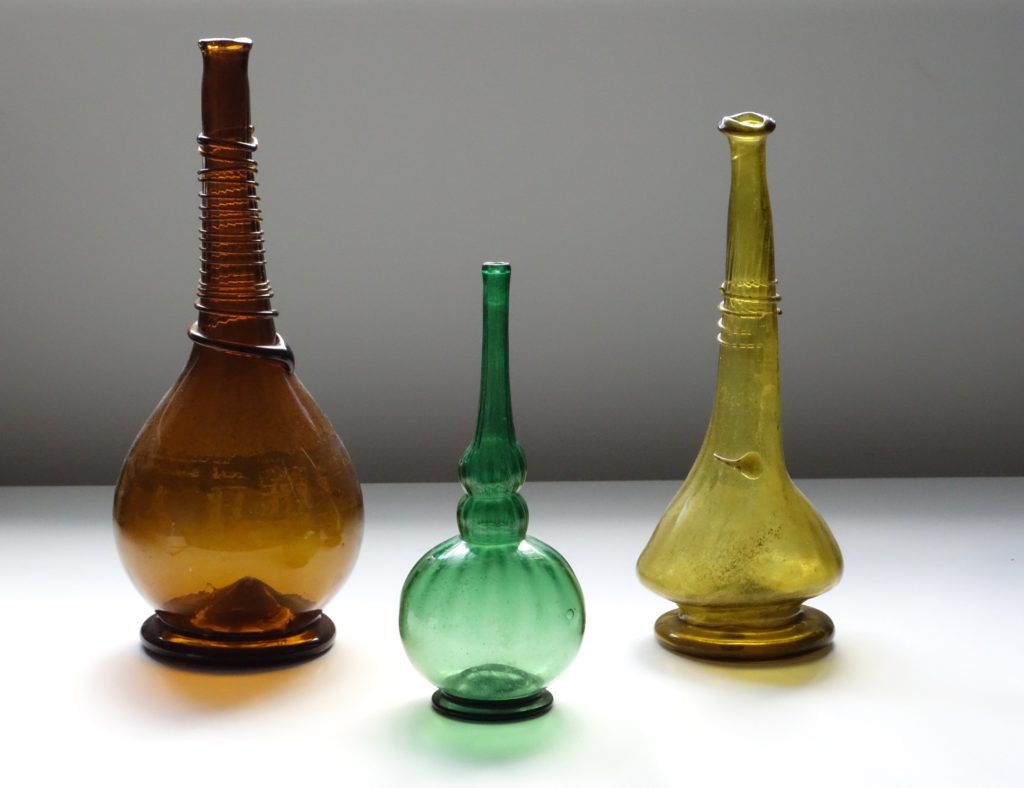
Left and right – Persian rosewater sprinklers, likely dating from early 1700s, likely manufactured in Shiraz. Centre – Indian rosewater sprinkler, likely dating from mid 1700s, likely manufactured in Kapadwanj, Gujarat.
For the Indian piece, I am relying on a number of auction house listings and some scant academic publications. But really, it’s largely conjecture. A French dealer I know well says that these were made in the UK for the Indian trade (all of them). Others attribute this glass to Bohemia, or to Beykoz (Turkey) (although I have two pieces of Beykoz and this glass isn’t really all that similar, and I can’t find any attributed Beykoz rosewater sprinklers that look anything like this).
For the Persian pieces, well there’s a puzzle. If I go with the fact that the banjo-shaped late Persians appear in Persian art and architecture in the 17th century (1620 forward), and I tell you that the glass and technique on these Persian sprinklers is identical to that on the banjo-shaped Persians, then I would actually have to date these Persian sprinklers to the mid-17th century. I’d love to do that, and there was a large, healthy, established industry in rosewater production and export in Persia in the mid-17th century…but I guess I’m loathe to claim openly that I own glass that’s as old as shaft and globes – or older. It seems a bit unreal that I could own so many pieces of glass that’s that old.
Looked at another way, most of the banjo-shaped flasks are very, very clean – which seems incorrect – but even in the journals of the day, travellers write about how dry the Persian environment is, and that items can be left out for years – decades – on end, with no signs of aging.
To throw another piece in the puzzle, the person who sold me the Indian sprinkler swears that the two “Persian” sprinklers in this photo are actually Indian as well, and simply earlier examples of production at Kapadwanj.
An Indian collector that I know has at least five of these sprinklers that I attribute to Persia, and my French dealer friend sees them as “Indian, or produced for the Indian market”.
From the 1712 article on wine and rosewater production that I’ve published on my site and copied excerpts here, the author states that 3 export companies were moving, among other things, 10,000 bottles of rosewater out of Persia each year. See here – last paragraph – https://www.saddleflasks.com/…/amoenitatum-exoticarum…/ .
That’s my thought process. As you can see, it’s largely a quiltwork of guesses and assumptions. Really, in the absence of pieces or specimens found in undisturbed archaeological layers next to clearly dateable items like coins, I’m still unsure how I’m ever going to have the opportunity to be definitive on this stuff. I keep looking for puzzle pieces, though.

